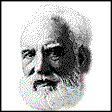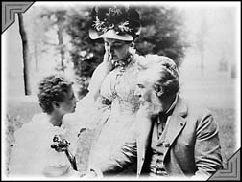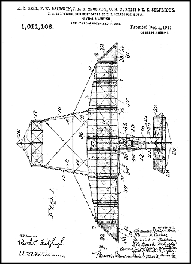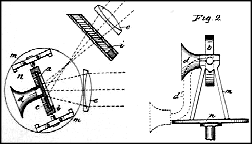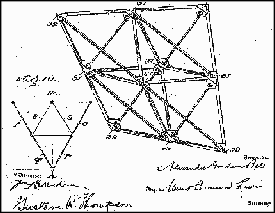



26th July 2008



Inventors & Inventions
IF IN DOUBT ASK !!!!

As early in his career as 1865 her had thought of using electricity to send messages and by 1875 had arrived at his foundation ideas, around which the transmision and reception of signals could be achieved. He demonstrated his idea to a Princeton University Professor - an idea of sending electric pulses to a tuning fork - and then a series of tuning forks to represent words. (This idea followed from his father's sytem in which cards with symbols were used to represent phonetics)
With his father, he had earliet experimented with a sheep's larynx and a set of bellows - the sound being conttrolled by shaped 'paddles' - and had some success with making sounds that could be understood. With support from his 'new love's father he employed an assistant, Thomas Watson with whom he experimented and developed his ideas. Together they had used waxed paper to reproduce vibrations - based on their awareness that communication could be helped through the touching of balloons held against the mouth, and by touching the throats of people speaking - both standard methods of communication with those without hearing. Vibrations in the paper had been induced through tiny electrical currents in wires alongside the paper and this was the basis of a transmitter and receiver of the telepehone device he invented.
Bell patented his ideas and devices and demonstrated them to the American Academy of Arts and Sciences on 10th March 1876 and the followed that by demonstrations to the Philadelphia General Exposition on 10th May 1876. He formed the Bell Telephone Company in July 1877 and then spent some time fending off litigation about the originality of his patents.
The US Supreme Court approved his claims and he was awarded $50,000 (The Volta Prize ), with which he set up the Volta Laboratories for further experimentation. In these laboratories he invented a ‘photophone’ - used to transmit speech by light, the audiometer; a device to help the deaf, and an induction meter that found metallic objects in the human body. Bell continued experimentation and produced the first recording devices using flat discs and cylindrical wax
After 1895 he became increasingly involved in thinking about aviation and invented the tetrahedal kite. He brought together G.H. Curtis and F.W. Baldwin who invented the aeileron and the hydroplane through their Arial Experiment Association.


